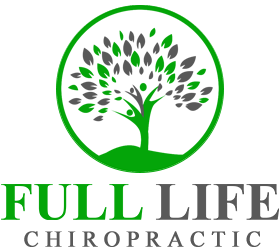Do You Have Scoliosis in Lutz FL?

A number of people suffer from scoliosis in Lutz FL. Typically, scoliosis begins as a minor bend in the spine that gradually progresses. In fact, for the diagnosis of scoliosis to be made, there must be a minimum 60-degree sideways curve of the spine. Once the spine has advanced to this stage there are often severe health consequences. The good news is that if the bending of the spine is discovered and cared for properly during its early stages, it can be prevented from advancing over time. This article discusses how chiropractic care in Lutz FL can help.
Many ideas regarding the cause of scoliosis have been researched and there has been little consensus regarding its origin. However, studies have shown that scoliosis is more likely to occur in young adolescent females. Many times a small bend in the spine begins with the simple misalignment of a single vertebra. Over time, the body begins to compensate for this abnormality, and “S” and “C” shaped curves of the spine develop. Often parents and children first notice the presence of scoliosis due to the un-leveling of the shoulders and pelvis. Unlike other spinal conditions, scoliosis cannot be reversed by changes in posture.
While many cases of scoliosis affect the younger population, it is important to realize that the condition can also develop in older adults. As people age, degenerative disorders such as osteoporosis cause the bones in the spine to lose their normal shape. As a result, the body begins to compensate by producing lateral curves in the spine to ensure that the head remains level. In such cases, if the cause of the bending is not addressed, severe consequences including heart and lung problems may develop.
An x-ray examination performed by your treating physician is the most effective means of detecting scoliosis. However, various orthopedic examinations such as the Adams position test can assist in the diagnosis. Our chiropractors at Full Life Chiropractic will also examine the hips and shoulders for un-leveling and also check the legs for variation in length which can be a clue to the development of scoliosis. Finally, with years of experience, our Full Life Chiropractic doctors have become proficient at identifying the presence of scoliosis by evaluating the range of motion in the spine.
Scoliosis in Lutz FL
As with any condition, a person should always consider the most conservative approach to treatment first. Chiropractic care has been demonstrated in numerous research studies to stop the progression of scoliosis and in many instances reverse the condition once present. Our doctors at Full Life Chiropractic have the resources and experience to provide you with the most appropriate care and as a result, eliminate the need for more invasive and aggressive treatments. To accomplish this, our office will perform a full health history to identify any factors that could be contributing to the presence of scoliosis. Often occupational factors, lifestyle habits, previous traumas, and recreational activities are at the roots of the problem.
After these factors have been considered, our chiropractors will perform specific spinal adjustments to reverse the body’s compensations and assist in the restoration process. If you have any questions regarding scoliosis or chiropractic care, please call Full Life Chiropractic in Lutz FL to schedule an appointment as soon as possible.
Monday
8:00am - 6:00pm
Tuesday
8:00am - 6:00pm
Wednesday
8:00am - 6:00pm
Thursday
8:00am - 6:00pm
Friday
8:00am - 4:00pm
Saturday & Sunday
Closed
Full Life Chiropractic
21754 FL-54
Lutz, FL 33549




